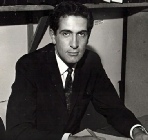© 2014-


Radio Hauraki - History
The New Zealand Broadcasting Corporation (NZBC) and its predecessor had held a monopoly right to broadcast since the early 1930s and operated both radio and television stations throughout the country. As with most other state monopoly broadcasters NZBC had become stale and insular and by the mid-
David Gape s, a young journalist, had an idea to break this state monopoly and provide the sort of radio entertainment people of his generation wanted. He had witnessed the lively output of Australian broadcasters and read stories about the early European offshore stations, particularly Denmark's Radio Mercur and Britain's Radio Caroline. He was deeply impressed by the way they had taken on the established state systems and revolutionised radio broadcasting in their respective countries. He reasoned that if a similar station could be launched off the coast of New Zealand it would have much the same effect on radio entertainment in that country.
s, a young journalist, had an idea to break this state monopoly and provide the sort of radio entertainment people of his generation wanted. He had witnessed the lively output of Australian broadcasters and read stories about the early European offshore stations, particularly Denmark's Radio Mercur and Britain's Radio Caroline. He was deeply impressed by the way they had taken on the established state systems and revolutionised radio broadcasting in their respective countries. He reasoned that if a similar station could be launched off the coast of New Zealand it would have much the same effect on radio entertainment in that country.
However, because of the geographical nature of New Zealand, isolated as it was in the Pacific Ocean with no near neighbour which could be used as a tendering or supply base, the project would be much more difficult to operate than those in Europe.
During the early part of 1965 David Gapes discussed the proposal with fellow journalist Bruce Baskett and both men agreed to pool their savings, give up their jobs in Wellington and move north to the more heavily populated city of Auckland, where a radio station would have more chance of commercial success. 
First they had to resolve the problem of identifying an anchorage position for the proposed station's ship. The planned target area of Auckland lies at the head of a gulf, which forms a large bay at the top of New Zealand's North Island. A close examination of maps revealed that there existed a small triangle of sea between Little Barrier Island, Great Barrier Island and the Coromandel Peninsular which was, according to the law, technically international waters .
Neither of the men knew anything about the technical side of radio, but David Gapes had met an amateur radio enthusiast, Dennis 'Doc' O'Callahan in Auckland some years previously and O'Callahan was persuaded to join the offshore radio project as its technical expert.
David Gapes and Bruce Baskett set about finding a suitable ship to use as a base for their offshore station. They were assisted by Jim Frankham who ran a coastal shipping company which happened to be selling much of its fleet to concentrate on the road haulage side of its business. Frankham was able to offer, on very reasonable financial terms, a small wooden coaster, the Hokianga, which was surplus to his company's requirements.
Obtaining financial backing for the offshore radio project proved far more difficult because businessmen and private investors were unwilling to take the risk of losing money on such an unknown proposition. David Gapes decided to approach the large tobacco companies (who had boycotted the NZBC for a number of years in protest against a restriction on cigarette advertising on television before 9.00pm) thinking they would be anxious to advertise their products on a non-
But by February 1966 the whole project had nearly foundered -
In March 1966 word reached Gapes that another group was also making plans to put an offshore radio station on the air. Fearing that this group would be better prepared technically and financially than Radio Hauraki Gapes and O'Callahan (who had returned to New Zealand in mid-
Using his contacts in journalism David Gapes decided to make one more bid to attract financial backing and support. He felt it was time to go public and be more positive about the plans for Radio Hauraki, while at the same time frightening off any possible opposition in the form of a rival offshore project. On April 9th 1966 the New Zealand Herald carried a front page story about Radio Hauraki, generally giving the impression that the scheme was far more advanced than it really was, and even suggesting that the station would be on the air within six months.


A brief film clip about Radio Hauraki

Click on picture to enlarge
The small area of international waters identified as a suitable anchorage for Radio Hauraki

History
Key Dates
Ships and Location
Technical
Staff
Programmes









Treasure Chest

David Gapes

Back to Radio Hauraki

Back to New Zealand Gallery



